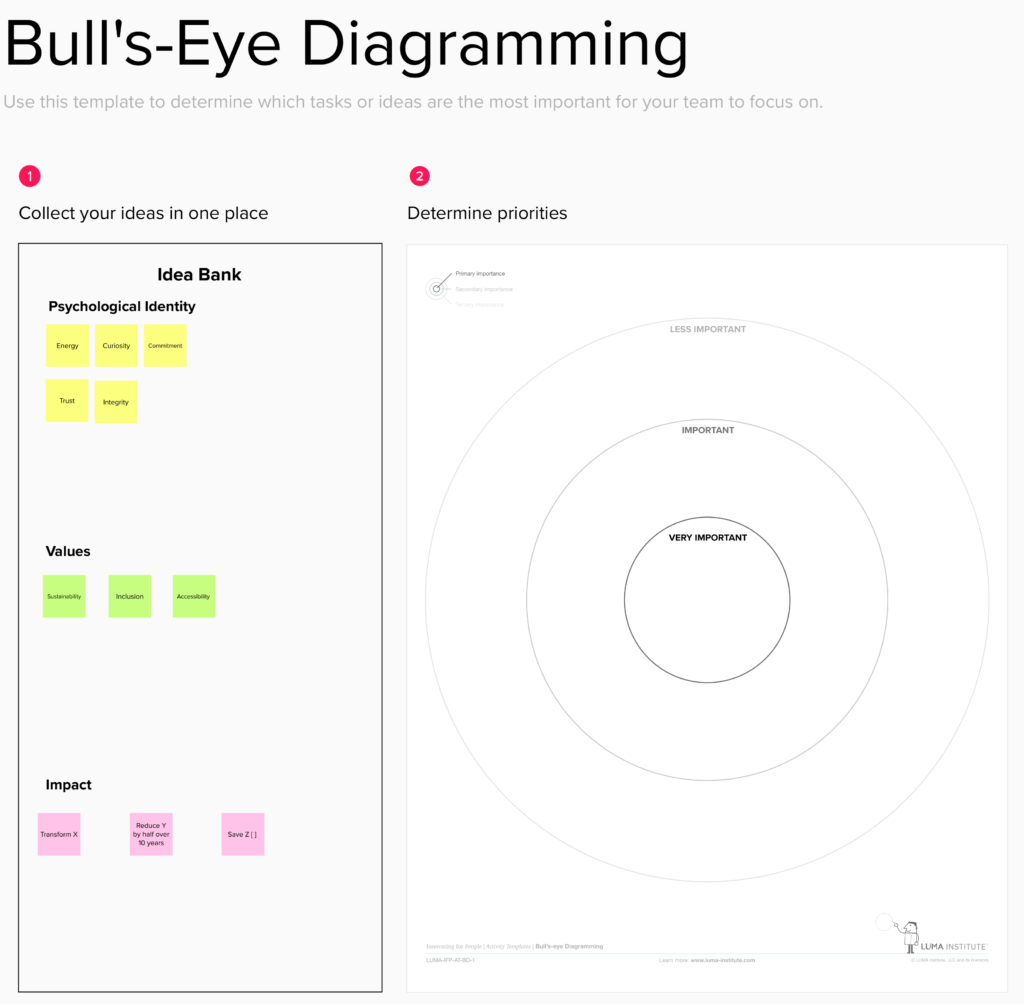This is an Eval Central archive copy, find the original at cense.ca.

Have you ever asked questions about your organization’s identity before?
Who are you?
What do you stand for?
What kind of things motivate you to action and direct your attention?
The answers to all of these questions shape what we do in our work. Organizations that have a clear sense of what they do, why they do it, and who they do it for tend to succeed. The reason? These organizations have greater alignment between purpose and strategy. In short: they have an identity.
Our identity — who we think we are — is a powerful guide for our behaviour. So how do we answer this question in our work?
Bulls Eye
A simple starting point for finding what matters and moves you is to use a Bull’s Eye diagram. A Bull’s Eye Diagram illustrates priorities through three layers of importance. All that is needed is a diagram of the ‘target’, sticky notes, and a space to organize the notes. The example below is done using the Mural tool and a pre-set template for ease of use..

A Bull’s Eye diagram can be used with individuals or groups. We often use this for a project when a client is struggling to identify what is both important and necessary for their work.
We also recommend that you use the Bull’s Eye diagram at the start of an engagement.
Once the items from the sticky notes are placed, it’s easier to see themes in the ‘data.’ This approach allows organizations to see what their members think are most important. It is the aggregate of these ideas that shape the culture of an organization and when you know what they are it’s easier to design with them.
With this knowledge in hand your organization can better design a purposeful strategy and make your identity aspirations a reality in practice.
We help organizations to design their culture for success. If you want help using this or other tools like it, contact us.
The post Surfacing Your Organization’s Identity appeared first on Cense.